Logistics, or the lack thereof, remains the Achilles heel of most African peacekeeping missions.
Former African Union (AU) Commission peace and security department director Geofrey Mugumya will tell next month's defenceWeb Peacekeeping Africa 2010 conference that a haphazard approach to logistics as well as to financing and force generation has hamstrung numerous past and present AU peacekeeping missions, starting with the continent's first mission in Chad in 1979.
The defenceWeb' Peacekeeping Africa 2010 conferencewill will take place at Gallagher Estate, Midrand, from August 26 to 27.
Mugumya will remind that the then-Organisation for African Unity undertook its first peacekeeping venture in Chad between 1979 to 1982. In notes prepared for the conference, he says the operation differed from the ceasefire observation missions that the OAU had been deploying up to that time.
But with the exception of the lead country—Nigeria, “there was lack of cooperation from many African countries. Among the other countries, which were supposed to provide units to the neutral African force—Congo, Benin, and Guinea, only the Congolese contingent composed of 500 troops showed up in Chad on January 18 1980.”
He will note a major lesson learned from the Chad operation was that the effectiveness of a peacekeeping mission is “commensurate with the capacity and political will of the troop-contributing countries and the centrality of cooperation by the neighbouring countries.
“The lack of a clear mandate, and concept, particularly with regard to logistics, operation and troop-generation, further demonstrated the inexperience of the OAU” he will note. Mugumya will add peacekeeping is “not a picnic but a complex and expensive operation.” Many African countries cannot afford to participate in peacekeeping operations without being assisted from outside.
Mugumya notes the a meeting of African Chiefs of Defence Staff (ACDS) met in Addis Ababa, Ethiopia, to draw lessons from the mission, but it is not clear what they learned.
“Did the AU [African Union] really incorporate the lessons learned from its past engagement in peacekeeping operations in the planning of AMIS [AU Mission in Sudan, deployed to Darfur] and AMISOM [AU Mission in Somalia], and hence the envisioned ASF [AU Standby Force]?” He records that at the inception of AMIS, in 2004 there was only one military officer in the Military Unit of the AU General Secretariat and “none the of the regular AU senior staff especially in peace and security Department had experience in peacekeeping.”
In addition, the “planning of AMIS was made in hurry as the political leaders wanted to demonstrate political commitment and as result there was no time to look at the best practices based on the lessons learned from the past.” As a result, the “mandate of the mission was never clear. … Critical areas that are necessary for launching a successful large and multidimensional operations peacekeeping operations were lacking...”
This includes the absence of a Joint Logistics Operations Centre (JLOC) “to support and coordinate the provision of logistical support in accordance with Senior Leader Team (the SLM itself was not in place) priorities.” There was also no Joint Operation Centre (JOC) to collate situation reports and operational information to provide current situational awareness of the mission and acts as crisis coordination hub and no Joint Mission Analysis Centre (JMAC) to provide integrated analysis of information in order to assess medium and long term threats to the mandate and to support SLT decision-making.
As a result AMIS encountered serious challenges. This was made worse by the assumption that donors would come forth to support the mission and as a result “boots were on ground before predictable funding was secured.” AMIS then had no control over those who supported “in kind” in strategic areas of the mission such as aviation, fuel, ground transport, camp construction, catering, medical and insurance.
“Coupled with the inadequate administrative, procurement as well as financial rules and regulations of the AU, which were not designed to respond to the needs of such huge operations, the whole programme became a mess,” Mugumya will tell his audience. “In some instances, the first contractors to arrive in the mission, took advantage of the AU weaknesses to make deals. The Status of Mission Agreement (SOMA) was not clearly negotiated and “as the result most its provisions were not implemented.” Status of Forces Agreements (SOFA) were also “badly drafted and sometimes even never signed and as result some countries turned up with non-functional equipment.”
An AU “Task Force” sent in early 2005 to assess AMIS' management and logistical procurement determined that “the whole Administrative and Management structure was not in place. In particular the logistics were messy.”
By January 2007 when AMISOM was launched, criticism of the AU's performance in Darfur was robust. In an effort not to repeat what happened in Darfur, the AU simply decided that troop contributing countries (TCCs) to AMISOM should self sustain with the AU to reimburse them once it had mobilised resources, he will aver. “This was another miscalculation, because most of the countries that had originally pledged troops could not afford to cater for themselves in all logistics.
Another negative factor was that by the time AMISOM was launched, it was at the same time that AMIS was being transformed to UNAMID, and bearing in mind the challenges TCCs/PCCs encountered with AMIS, most of them shifted their pledges to UNAMID as they understood that under the UN, there is always predictable funding.”
Mugumya is to conclude that these lessons now appear to have been learned and written into the ASF. “However, success of how the future ASF shall much depend on the availability of funding, which should not only from the AU members but the United Nations as whole.” And that remains the rub.
Saturday, July 24, 2010
Subscribe to:
Post Comments (Atom)





















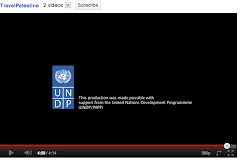





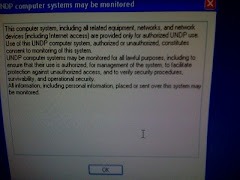









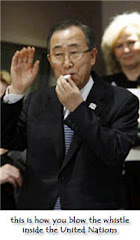
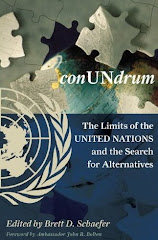

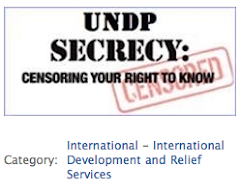

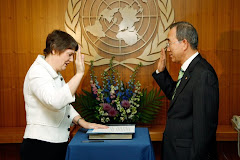





No comments:
Post a Comment